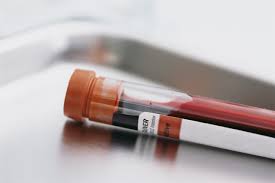Quite often we order blood tests to diagnose and treat patients.  You may hear some of these terms or names of tests when speaking with your physician or getting your lab results – which you may access via MyChart.
You may hear some of these terms or names of tests when speaking with your physician or getting your lab results – which you may access via MyChart.
Below is a list and brief definitions of the most frequently used blood tests taken at Suburban Gastroenterology.
Please contact us at 630-527-6450 with any questions you may have on your blood tests.
AFP (alpha fetoprotein) is a protein made by the liver. In an adult, a high level in the blood can be a sign of liver cancer.
Albumin is a protein made by the liver. When a person has liver disease, the level of albumin in the blood is often low.
Alk phos (alkaline phosphatase), an enzyme produced by the liver. When the liver is damaged, ALT leaks into the blood. If a blood test finds a high ALT, this can be a sign of liver problems such as inflammation, scarring or a tumor.
Ammonia, a harmful substance left behind in the blood after digestion. Normally, the liver removes ammonia from the blood and turns into urea, which leaves the body with urine. If a blood test shows that the ammonia level is too high, this elimination process is not functioning as it should.
AST (aspartate aminotransferase), an enzyme made by the liver. High levels suggest injury, especially if the ALT level is also high.
Bilirubin, a yellow substance made when the body breaks down red blood cells. It’s collected by the lever to be sent out of the body with stool. When something is wrong with the liver or bile ducts, bilirubin may build up in the body. This causes jaundice (yellowing of the skin and the whites of the eyes). Two measurements may be taken: total bilirubin and direct bilirubin. A high total bilirubin level indicates the liver is not breaking down bilirubin. A high direct bilirubin level suggests a blockage in the bile ducts.
CBC (complete blood count), a test that measures all parts of the blood (red blood cells, white blood cells, and platelets). Problems with theses counts can mean infection or illness. They can also be a sign of a problem with the spleen, an organ close to the liver that can be affected by liver disease.
Essential fatty acids (EFAs), nutrients in the body. EFA levels may be lower when the liver is diseased. This is because can’t absorb and transport EFAs as it’s supposed to.
GGT (gamma-‐glutamyl transpeptidase), an enzyme often measured along with other enzymes to gauge liver problems. If alk phos and GGT are both elevated, this is a sign that the bile ducts in the liver may be diseased or blocked.
Glucose, is sugar in the blood. A healthy liver helps the body maintain a normal glucose level. If a blood test reveals that glucose is low, this may mean the liver is not working properly.
Prothrombin time (PT), tests the ability of the blood to clot. Since the liver makes a protein that helps with clotting, problems with clotting can be a sing of liver disease. Part of this blood test, the INR (international normalized ratio), measures vitamin A levels.
Serum bile acid (SBA), is the amount of bile acid in the blood. A high level may mean that the bile ducts are blocked.
Vitamins A, D, E, and K, fat-‐soluble vitamins absorbed by the liver, with help from bile. If a blood test shows that the levels of these vitamins are low, this could mean the liver is not absorbing them properly.
Zinc, a nutrient absorbed by the liver. If a blood test shows a low zinc level, this could mean the liver is not absorbing zinc properly.


